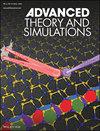Supporting Effect and Influence Law of Energy‐Absorbing Rockbolts in Soft Rock Roadway with Large Deformation
IF 2.9
4区 工程技术
Q1 MULTIDISCIPLINARY SCIENCES
引用次数: 0
Abstract
To clarify the supporting effect and influencing factors of energy‐absorbing rockbolts in soft rock roadways with large deformation, by considering four factors including rock deformation, plastic zone, rockbolt force, and stress of the surrounding rock, comparative analysis of no‐rockbolt, conventional rockbolt, and energy‐absorbing rockbolt schemes is conducted. The effect of the energy‐absorbing rockbolt is analyzed based on a self‐developed numerical simulation program, and a study is conducted on the influence of five factors such as the energy‐absorption starting axial force, ultimate yielding distance on the supporting effect. The results show that: 1) Compared to conventional rockbolts, the energy‐absorbing rockbolts maintain a intact support system and continuously providing support resistance within 75 d of calculation. 2) Energy‐absorbing rockbolts significantly increase the maximum and minimum principal stresses of the roadway. The increase in maximum principal stress significantly enhances the range of the bearing arch in the surrounding rock. Energy‐absorbing rockbolts have a high capacity to compensate for radial stresses unloaded. 3) The greater the energy‐absorption starting axial force, the more significant the compensation effect of the rockbolts on the radial stress. Appropriately increasing the ultimate yielding distance and rockbolt length can effectively prevent rockbolt failure and control the area of plastic zone.大变形软岩巷道吸能锚杆支护效果及影响规律
为明确吸能锚杆在大变形软岩巷道中的支护效果及影响因素,综合考虑岩石变形、塑性区、锚杆力和围岩应力4个因素,对无锚杆、常规锚杆和吸能锚杆方案进行了对比分析。利用自行开发的数值模拟程序对吸能锚杆的支护效果进行了分析,研究了吸能起始轴向力、极限屈服距离等5个因素对支护效果的影响。结果表明:1)与常规锚杆相比,吸能锚杆在计算75d内保持了完整的支护体系,并持续提供支护阻力;2)吸能锚杆显著提高了巷道的最大和最小主应力。最大主应力的增大显著增大了围岩承载拱的范围。吸能锚杆具有较高的径向应力补偿能力。3)启动轴向能量吸收力越大,锚杆对径向应力的补偿作用越显著。适当增大锚杆极限屈服距离和锚杆长度,可有效防止锚杆破坏,控制塑性区面积。
本文章由计算机程序翻译,如有差异,请以英文原文为准。
求助全文
约1分钟内获得全文
求助全文
来源期刊

Advanced Theory and Simulations
Multidisciplinary-Multidisciplinary
CiteScore
5.50
自引率
3.00%
发文量
221
期刊介绍:
Advanced Theory and Simulations is an interdisciplinary, international, English-language journal that publishes high-quality scientific results focusing on the development and application of theoretical methods, modeling and simulation approaches in all natural science and medicine areas, including:
materials, chemistry, condensed matter physics
engineering, energy
life science, biology, medicine
atmospheric/environmental science, climate science
planetary science, astronomy, cosmology
method development, numerical methods, statistics
 求助内容:
求助内容: 应助结果提醒方式:
应助结果提醒方式:


